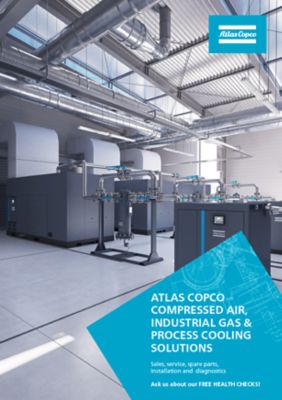Plastic material conveying systems
Plastic is among the world’s most important – and therefore also among the most transported – materials.
Vast quantities of it have to be moved daily to and from production and processing facilities – as well as within them. While there are different methods of doing so, pneumatic conveying has proven to be the most effective and efficient technology for transporting bulk materials such as plastic.
Sizing a plastic conveying system
Pneumatic conveying uses compressed air to move very large volumes of materials through pipelines or hoses from one point to another. It is an extremely efficient way to cover distances from a few to hundreds of meters.
While the definition of pneumatic conveying is simple enough, finding the optimal system for plastic (and properly sizing it) is a bit more complicated. This is especially important in the case of plastics because the pellets that have to be transported have different sizes depending on the application, which means they also require a different compressed air flows and pressure to be moved efficiently. To understand what has to be done to install the ideal solution, it is therefore worth taking a closer look at the different options.
Finding the right plastic material conveying system
First, there are two types of pneumatic conveying – pressure (positive) and vacuum (negative) conveying. In the former, compressed air is used at the start of the system to push the material through the piping. In the latter, it is “sucked” toward its destination.
While only one of them is suitable for some materials, plastic can be conveyed using both negative and positve pressure conveying. It depends on the type of plastic that has to be transported as well as the system requirements to pick the ideal solution.
In addition to determining the type of pneumatic conveying you want to use, you also have to choose or know the proper phase. In this case, it means you’re employing either the dilute and dense phase.
Air blowers and compressors for plastic conveying
Once you know in which phase you’re conveying the material, you have to properly size the system, which comes down to finding the ideal flow and pressure in which to convey. Even if you’re looking to replace an existing compressed air system, a sizing check will be useful. A correct sizing will help you reduce your energy bills and ensure a smooth operation. If you have chosen the dilute phase, then a free sizing check will be extremely helpful in finding the right system and preventing you from selecting an incorrectly sized blower or compressor.
Aftercoolers
Plastic is sensitive to heat. From our everyday experience, we know that it can soften or even deform if exposed to high temperatures. That is why, in addition to a compressor or blower, you will need an aftercooler to ensure that the air temperature is below 70°C to 90°C (depending on the application).
Some compressors feature an integrated aftercooler while others do not. In that case (and if you are using a blower), the aftercooler will have to be installed separately. It may also be necessary to add a chiller if you choose to install a water-cooled aftercooler. The chiller brings down the water temperature to a manageable and constant level, which ensures that the aftercooler can do its job.
Water separator or dryer
The cooling process with an aftercooler creates moisture. Therefore, in order to protect the plastic, it also needs a water separator or dryer. Generally, integrated aftercoolers come with an integrated water separator. In some specific cases, a dryer instead of a water separator can be used to remove the moisture from the air.
The role of fluidization for plastics
Compressed air can also be used for the so-called “fluidization” process. When conveying plastic material, very low-pressure air is injected into the system to ensure the plastic does not stick to the sides of the container that holds it. In addition, fluidization makes it easier to convey, which reduces energy costs. Although fluidization is a type of pneumatic conveying, it usually does not require extra equipment such as aftercoolers. The air pressure required for fluidization of plastic is very low, so there is less heat created by the blower or compressor during the compression process. This results in a lower air temperature.
Need help optimizing your plastics conveying system?
Not sure how to replace your old compressed air system with a new one? Let us help you. The right size of the installation is crucial: not only does it help you save on energy costs, it also shortens unloading times and helps you avoid blockages. Calculating the right size of your installation is difficult and requires specific software and skills. We can help you find the optimal dilute phase pneumatic powder conveying system by offering you a free sizing calculation.

